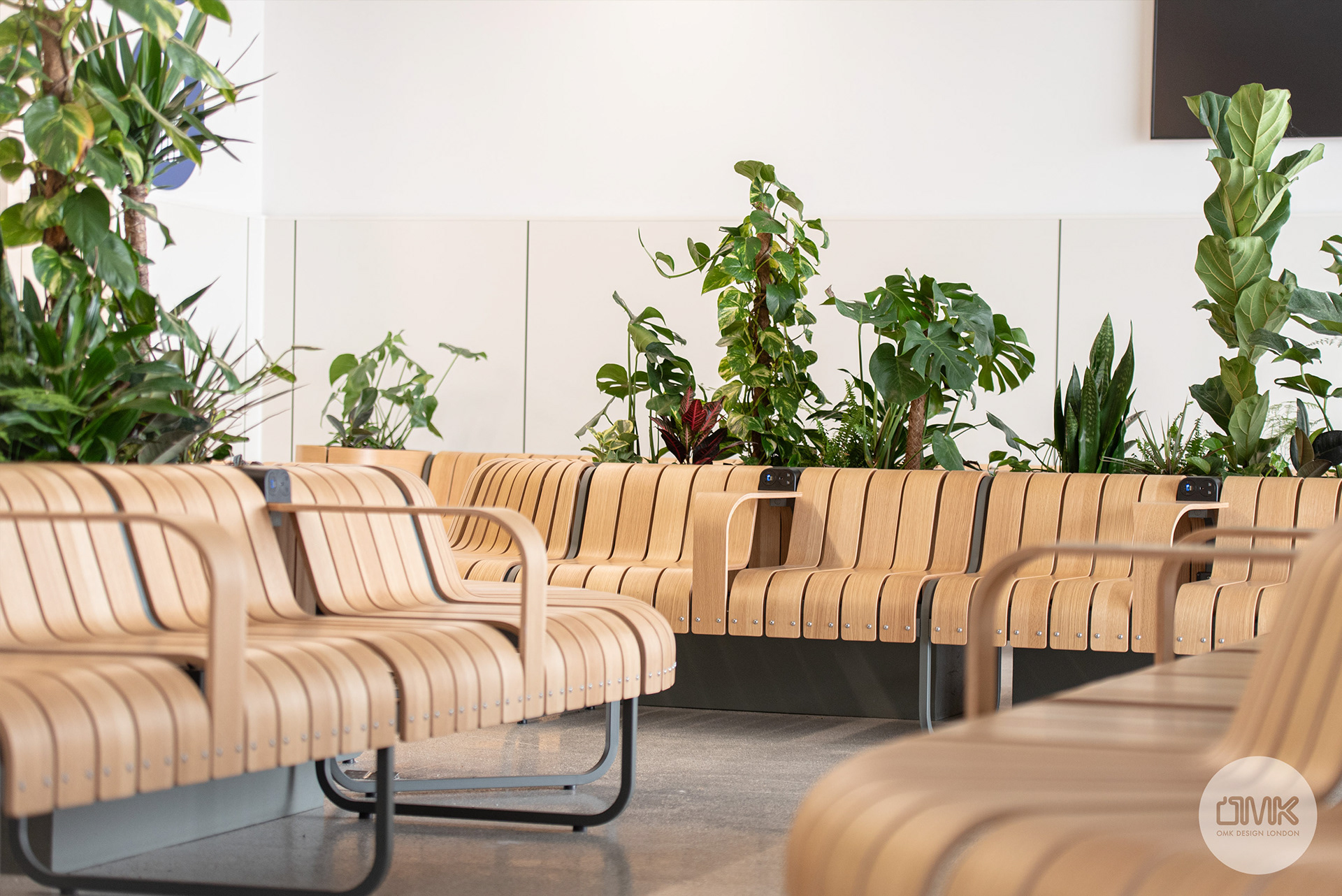Role: Industrial Designer
Company: OMK Design
Year: 2022
Company: OMK Design
Year: 2022
Metro is a sculptural and reconfigurable modular seating system, designed to bring a more natural aesthetic into public spaces. Metro’s continuous form utilises both curved and straight modules with a range of accessories, including tables, power and planters - allowing bespoke layouts to be created. This can improve passenger flow and reduce congestion, in turn creating more usable spaces.
Design
The run of Metro contorts to its surroundings both organically and geometrically. The modules appear to open and close naturally. Clean geometric runs ensure longer configurations are unobtrusive.
It has a light, natural palette, unlike a lot of seating you find in public spaces. With its wooden slats and natural green-grey frame, Metro is visually light and doesn't overwhelm the public space.
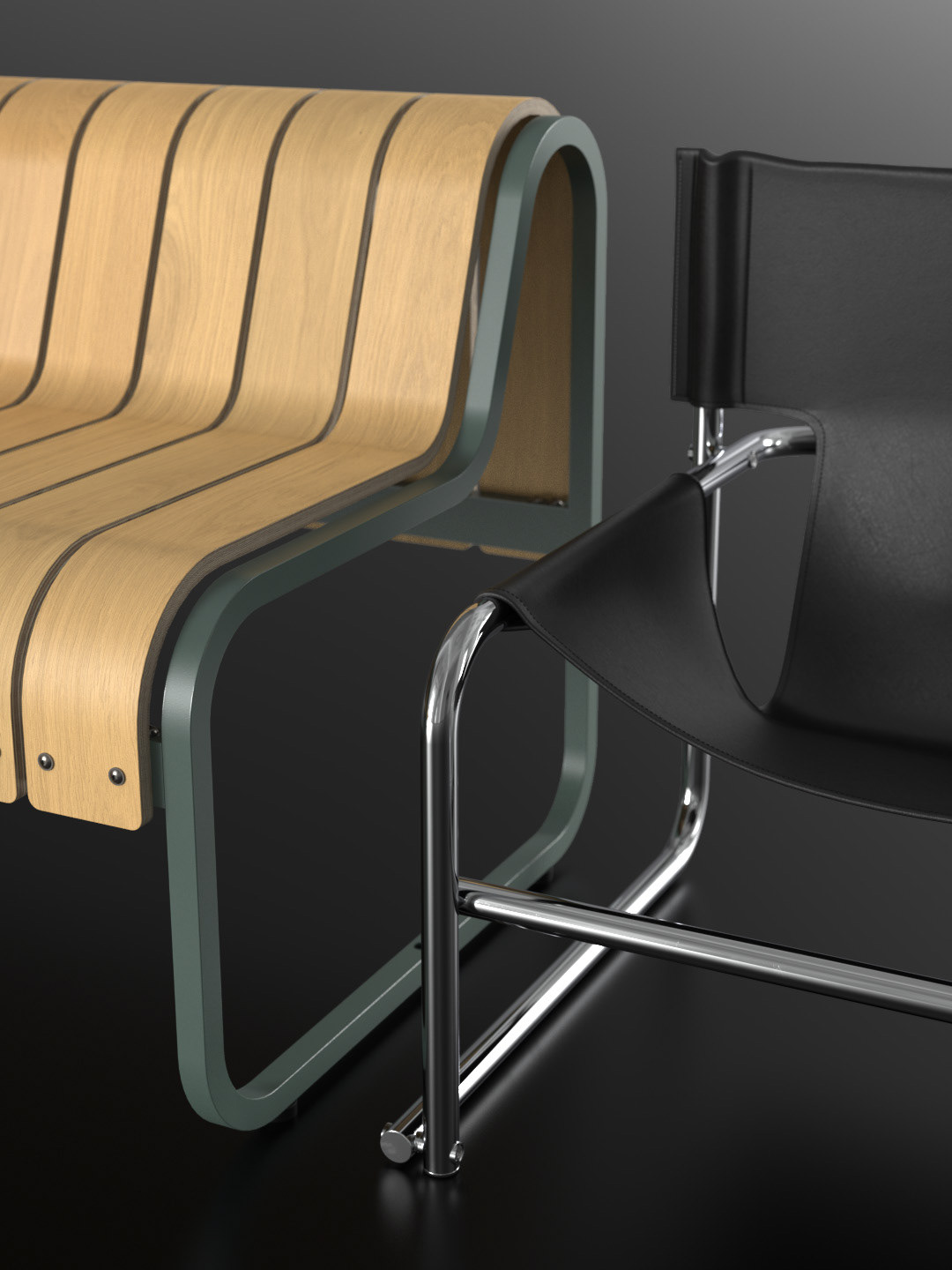
T1 Sling Chair (1967)
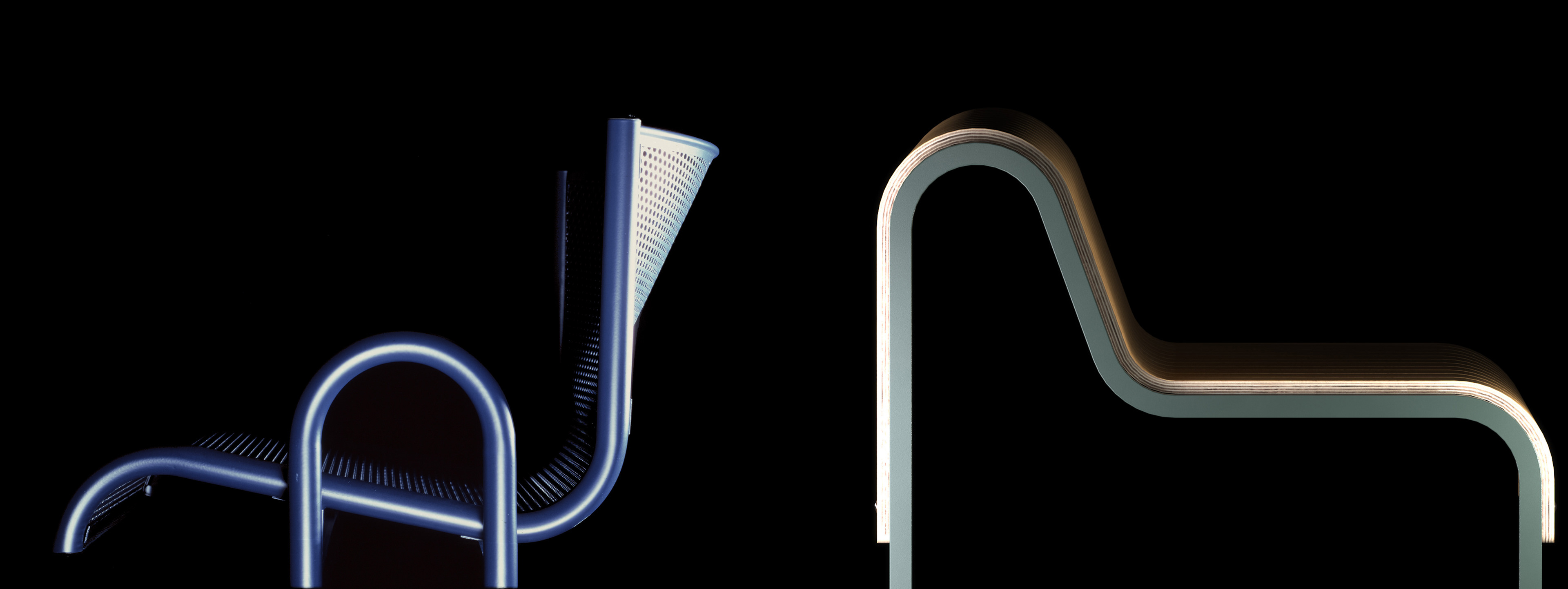
Transit (1980)
Metro draws inspiration from its OMK heritage, taking visual cues from the iconic T1 sling chair (1967) with its exposed tubular frame, as well as from other OMK originals such as Transit (1980s).
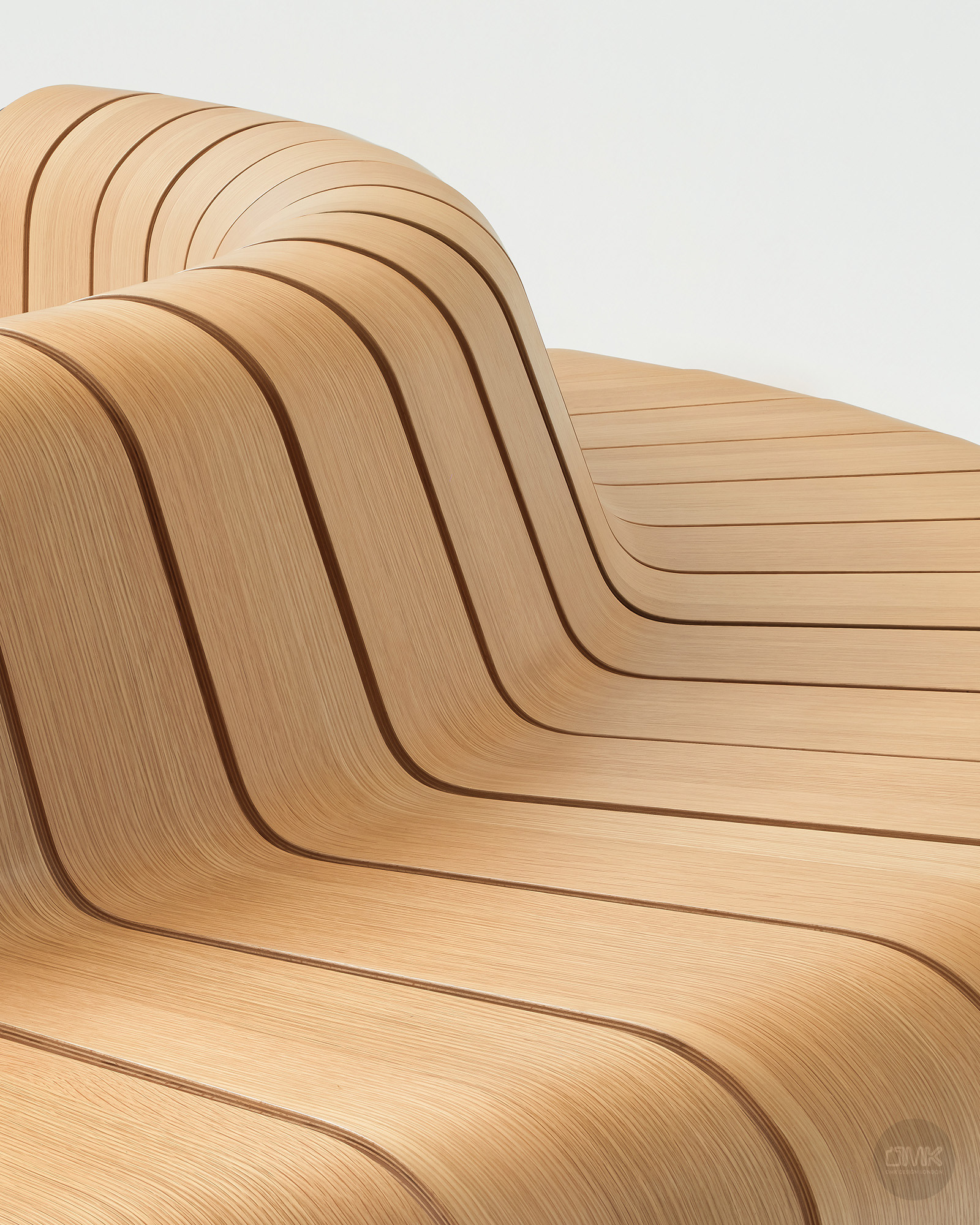
Flowing curvature
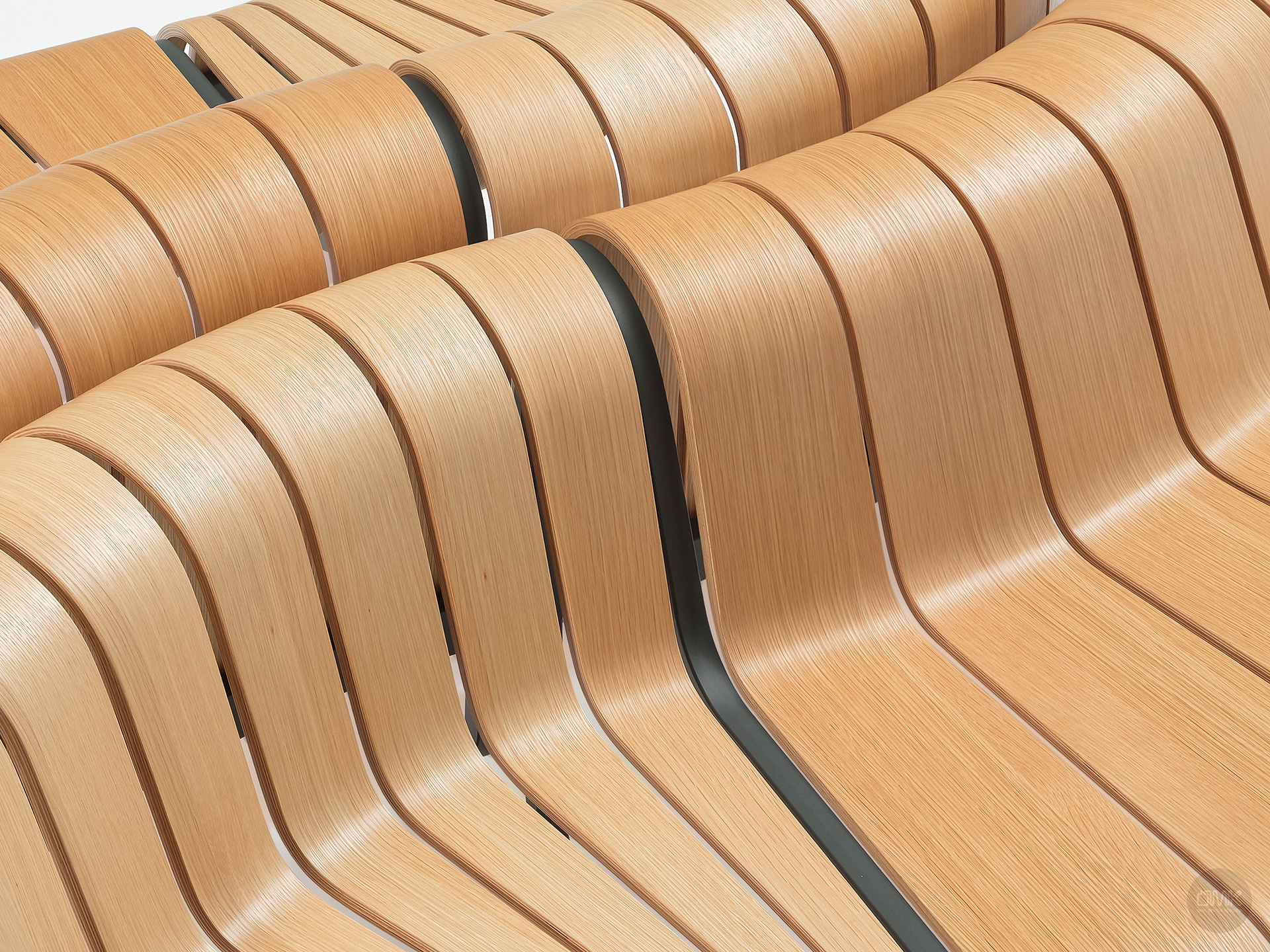
Back to back
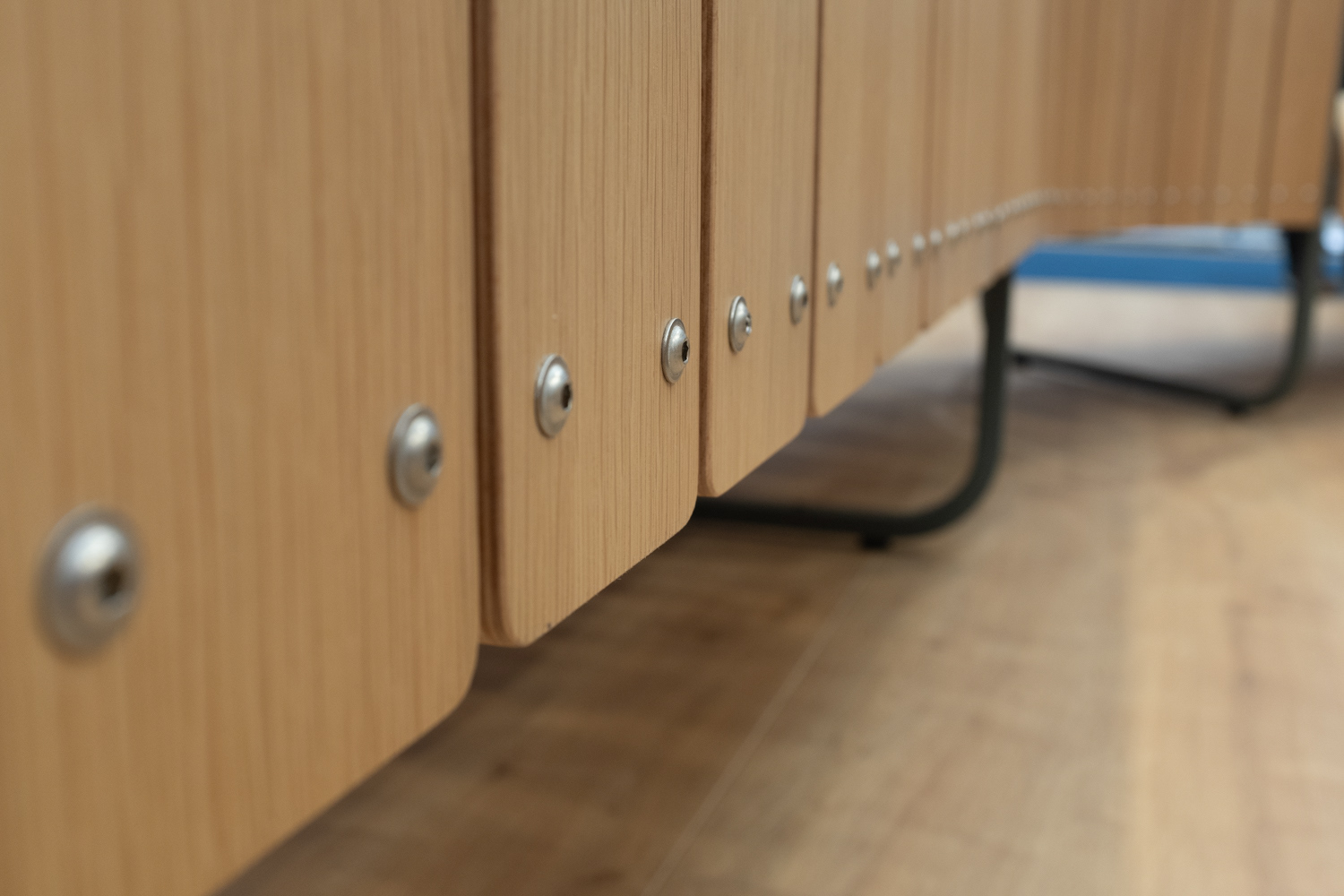
Fixings flow with the run
Metro embraces its fixings and uses them as features, following the curves and bends of the run. Placing them at the front enables easy installation and maintenance. Individual slats can be easily replaced with minimal downtime and no special tools required, further increasing its service life.
Concentrating on its life cycle and unlike traditional public seating, no plastics are used in its standard configurations and the plywood slats can be easily separated from its steel frame - this all results in longer service life and reduced waste.
The User
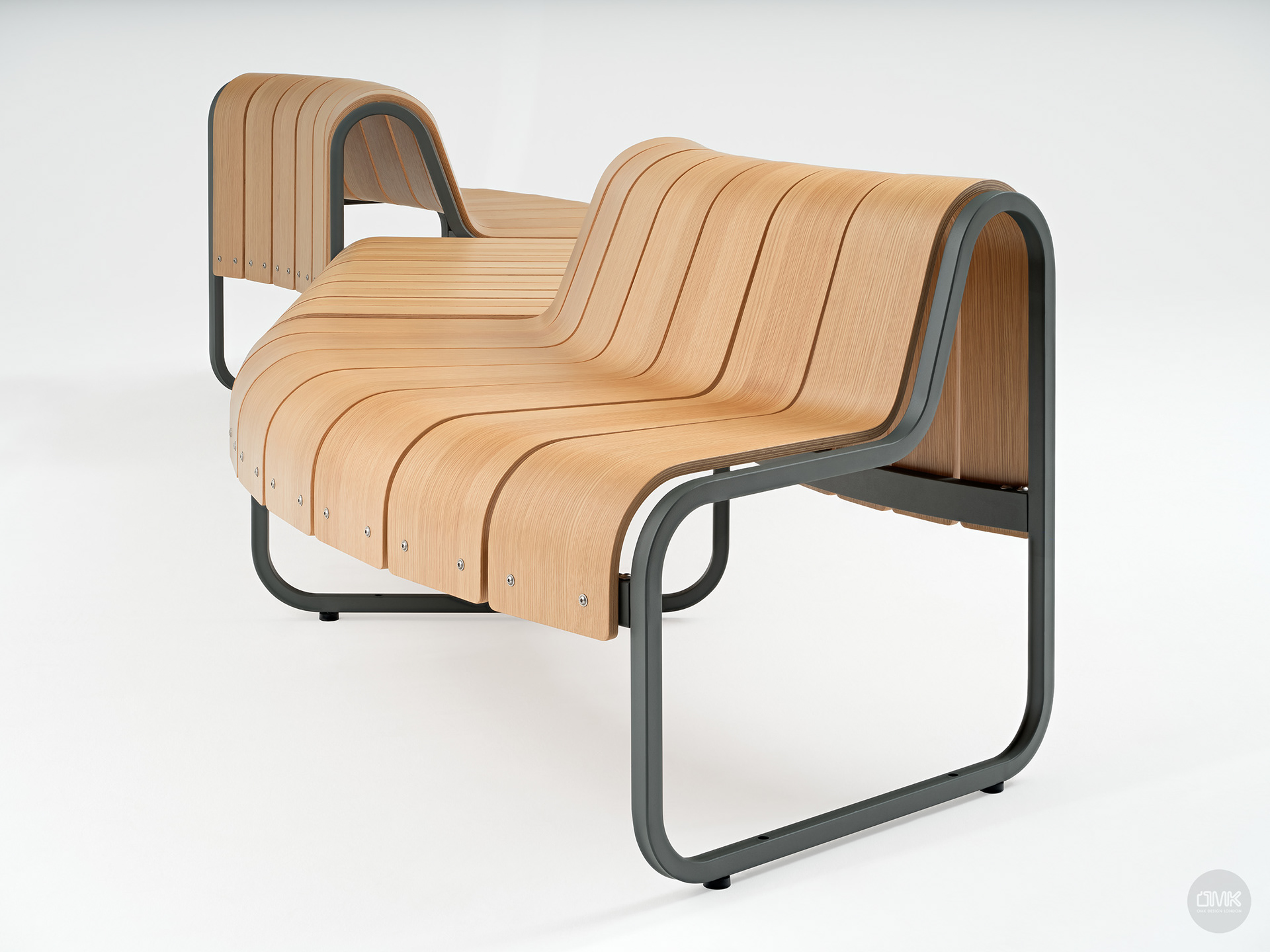
Honest and open design

The rounded seat top is used as a perch

The user is key to Metro's design. Although designed for short sit public areas, Metro is focused on comfort. Wider slats ensure better support and we optimised the thickness to ensure it is strong but allows flex. Its low backrest is high enough to be supportive, low enough to provide an armrest, and also acts as a lean or perch when approaching from the other, non-seated side.
The consistent gap between each slat has been designed to eliminate pinch points and to play into Metro's geometric visual language.
There is no rake or slant on Metro's seat because this would force users to sit a certain way, as they do with traditional seating. Instead a flat surface allows groups to sit closer and more casually. The flat seat also aids users with limited mobility. They can sit nearer the edge, which helps when trying to get up as they do not have to overcome the deep seat, and also allows for users to slide over or in.
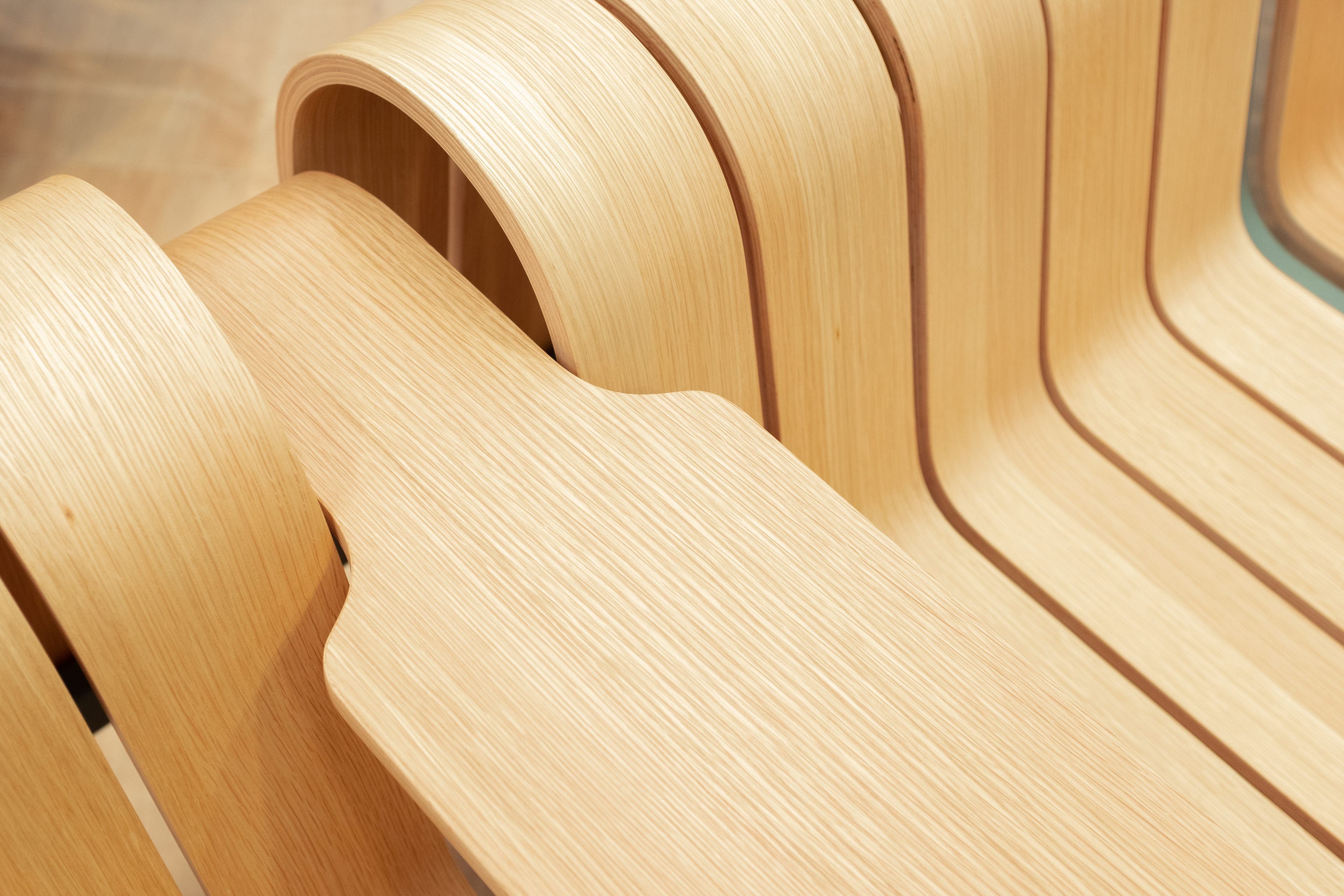
Additional armrest is designed to also be used as a table
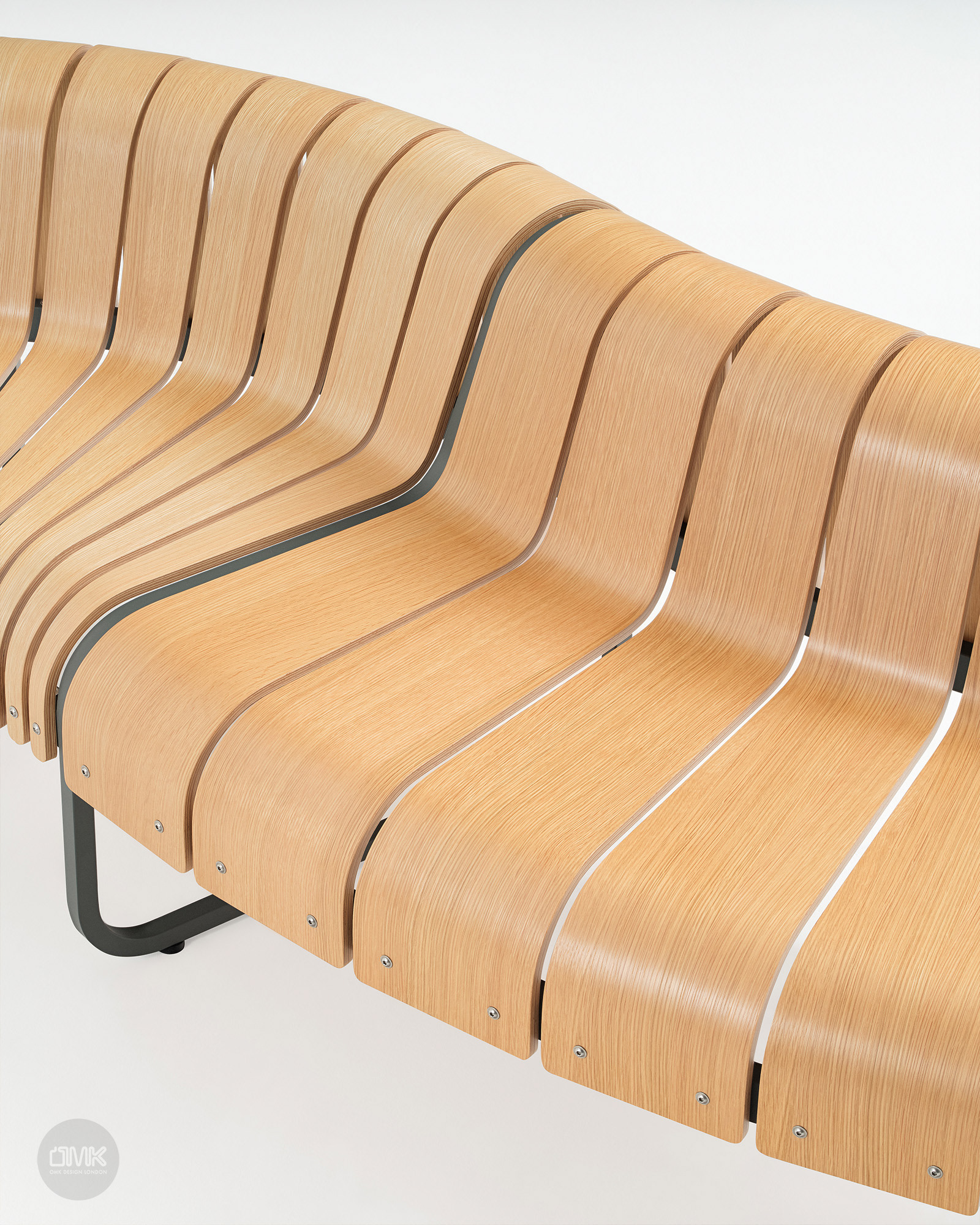
Wide slats aid comfort
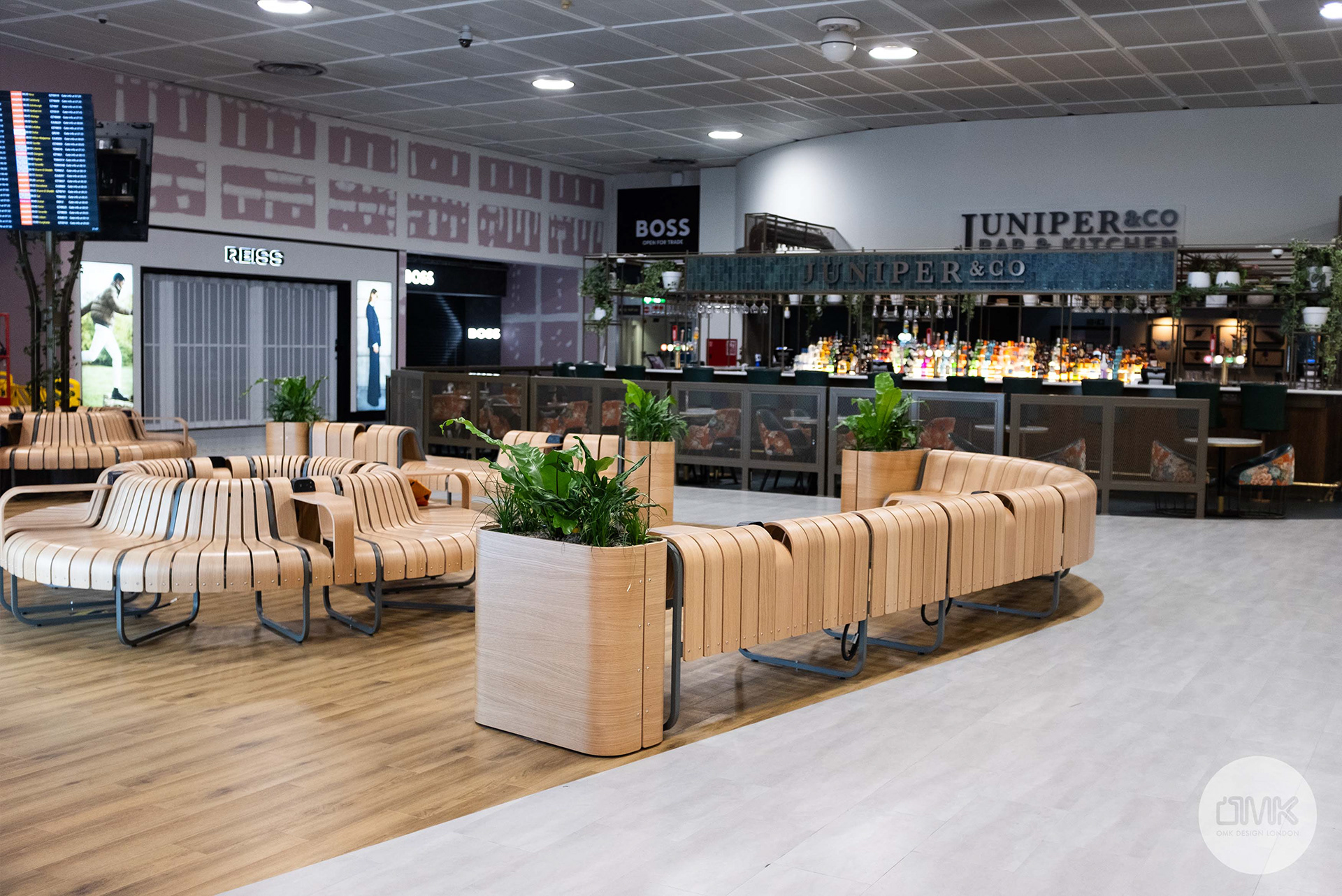
Gatwick Airport

Portsmouth Ferry Terminal
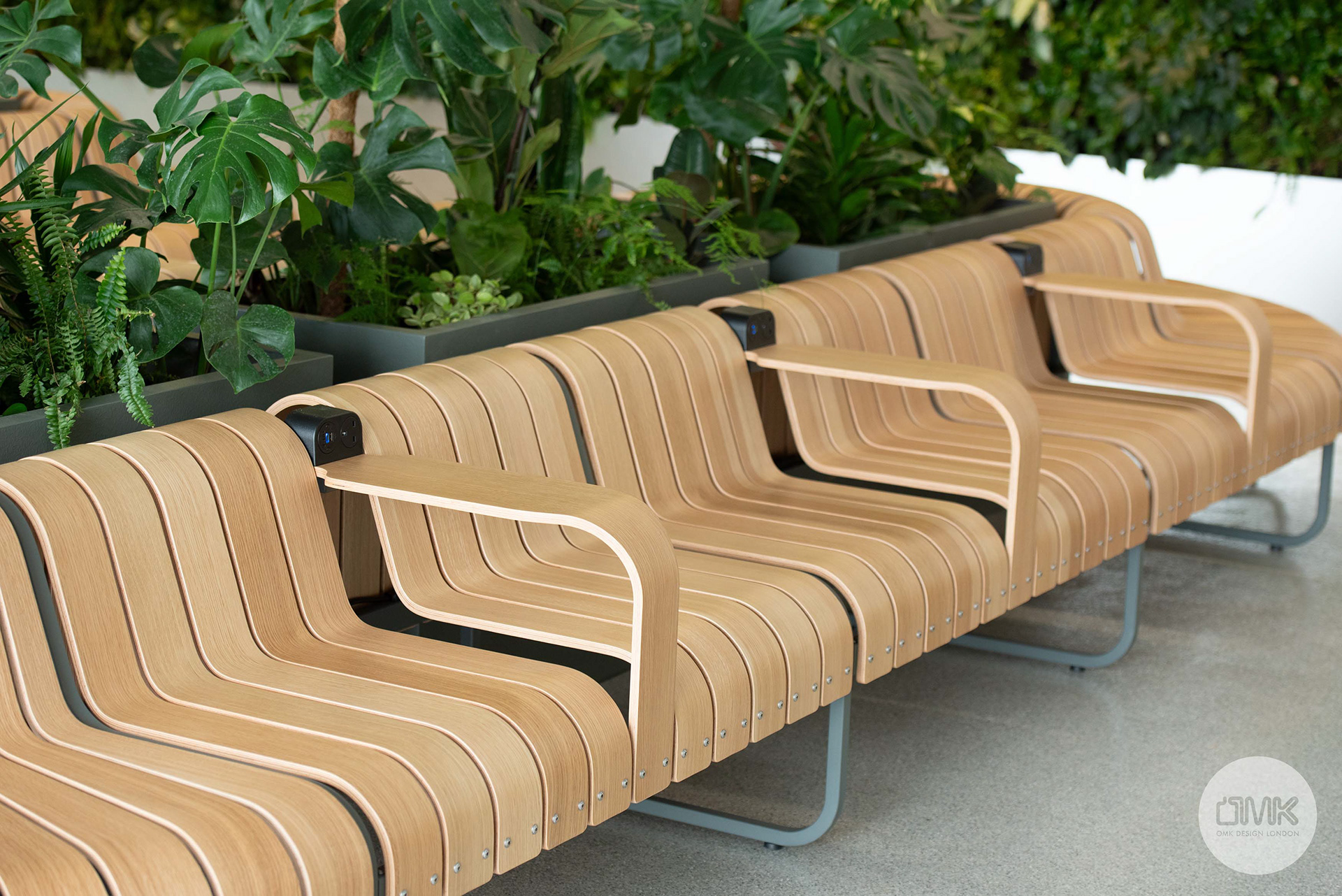
Portsmouth Ferry Terminal
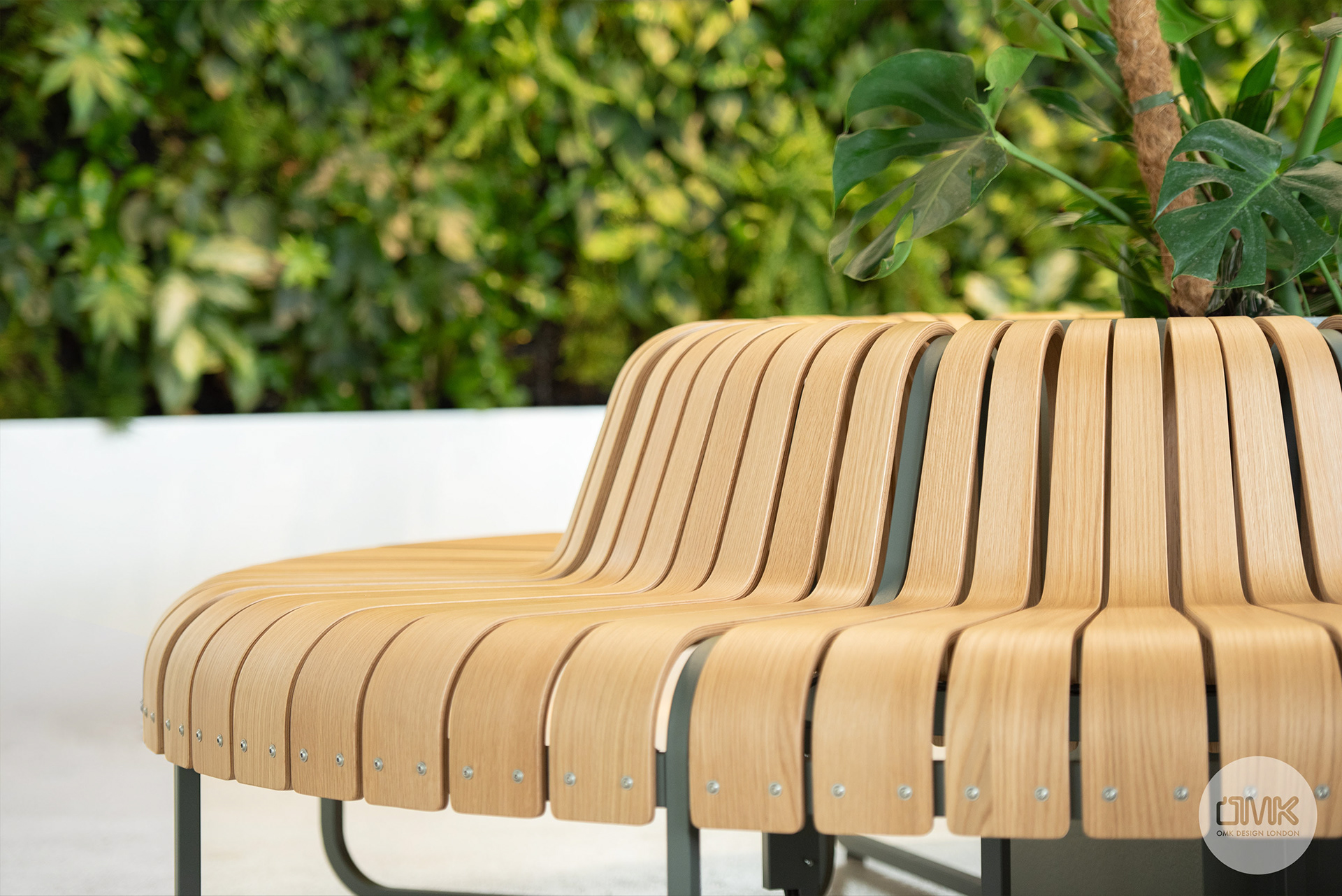
Portsmouth Ferry Terminal
